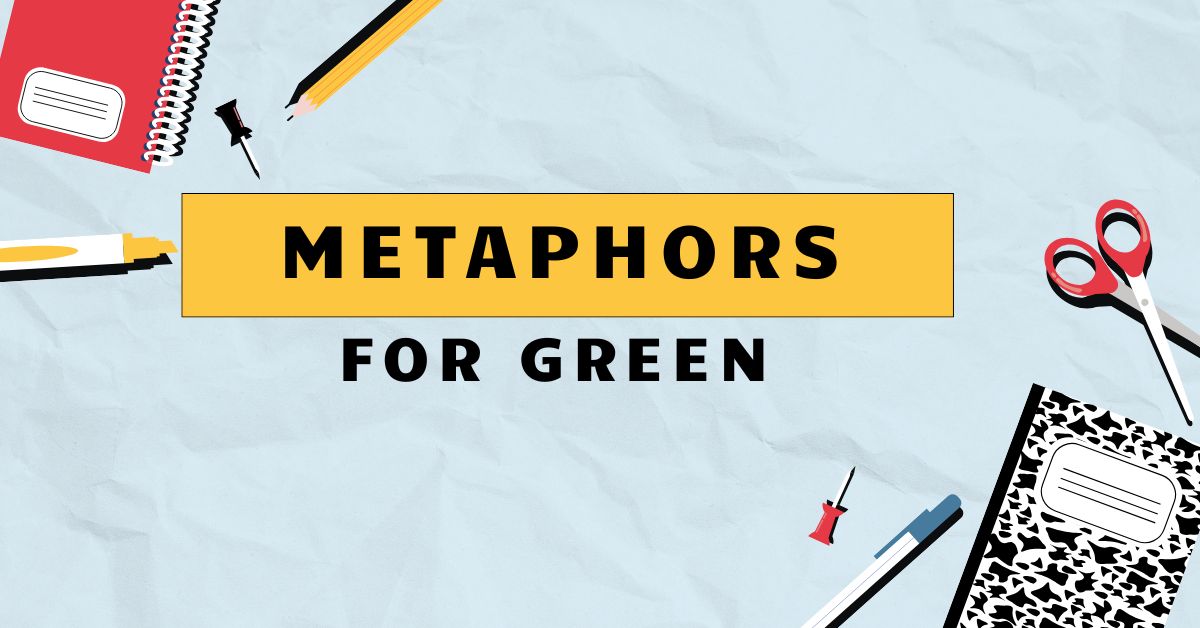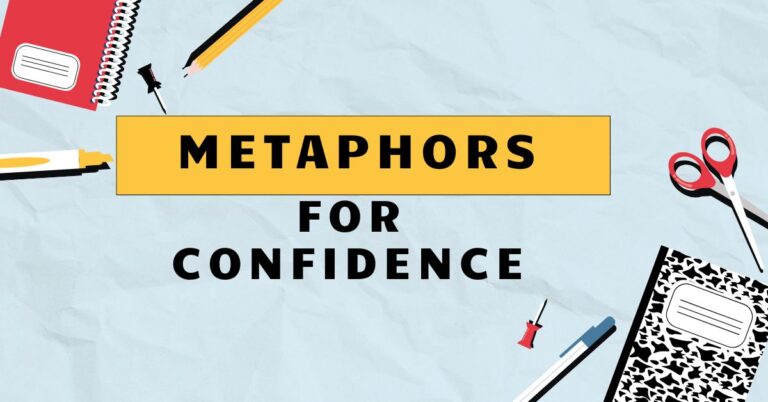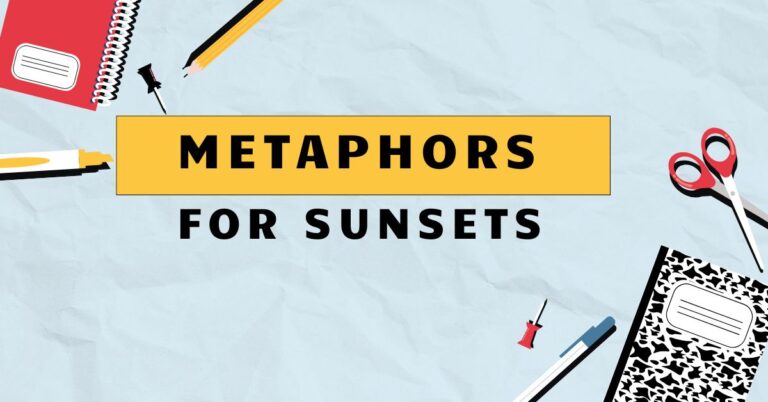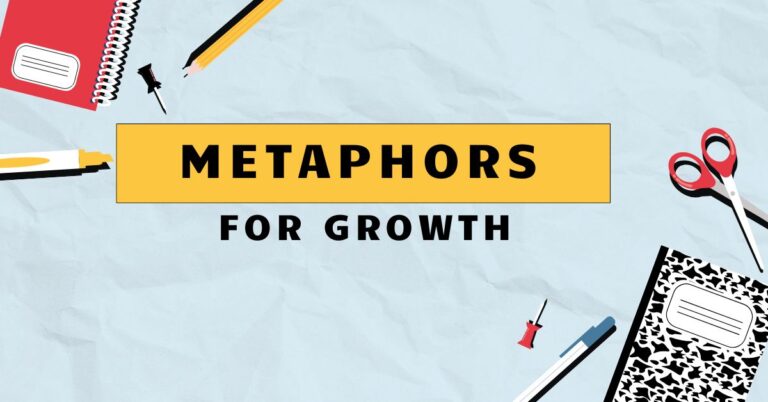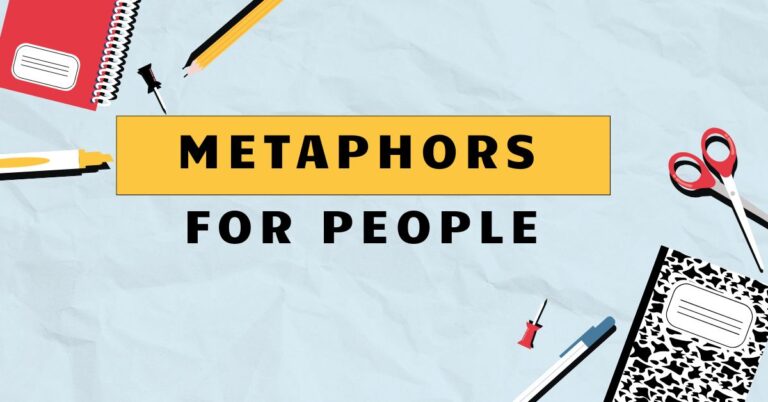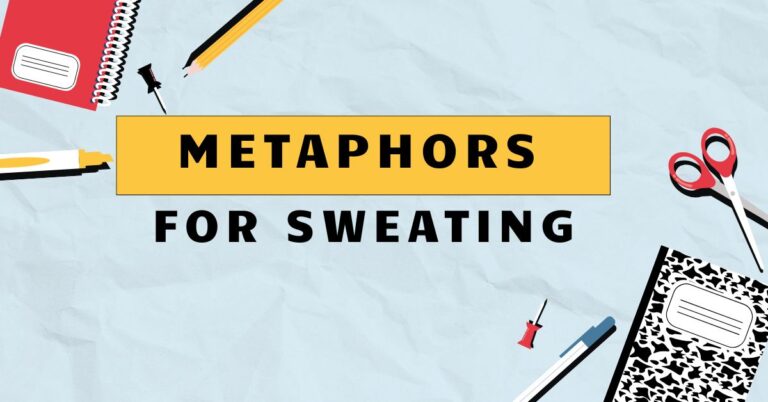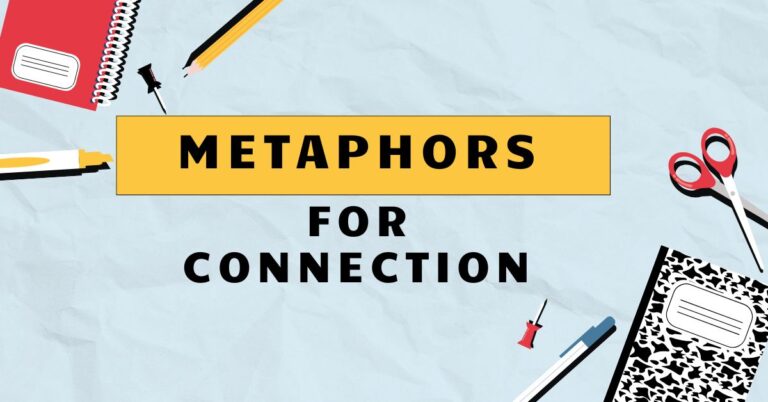49 Green Metaphors: Exploring Symbolism and Figurative Language
Metaphors are powerful tools in the English language, allowing us to convey complex ideas and emotions in a vivid and memorable way. When we use “green” metaphorically, we tap into a rich vein of symbolism associated with nature, life, and various abstract concepts.
Understanding these metaphors enhances our comprehension of literature, improves our writing skills, and provides insight into cultural associations. This article explores the diverse range of metaphors associated with the color green, providing clear definitions, examples, and exercises to help you master this fascinating aspect of figurative language.
Whether you’re an English language learner or a seasoned writer, this guide will offer valuable insights into the world of green metaphors.
Table of Contents
- Introduction
- Definition of Metaphor and Green Metaphors
- Structural Breakdown of Green Metaphors
- Types and Categories of Green Metaphors
- Examples of Green Metaphors
- Usage Rules for Green Metaphors
- Common Mistakes with Green Metaphors
- Practice Exercises
- Advanced Topics in Green Metaphors
- Frequently Asked Questions
- Conclusion
Definition of Metaphor and Green Metaphors
What is a Metaphor?
A metaphor is a figure of speech that directly compares two unrelated things without using “like” or “as.” It asserts that one thing *is* another, creating a connection between them to highlight a shared quality or characteristic. Metaphors enrich language by adding depth, imagery, and emotional resonance.
They invite the reader or listener to understand something in a new and insightful way.
For example, saying “He is a lion in battle” doesn’t mean the person is literally a lion. It means he possesses qualities associated with lions, such as bravery, strength, and ferocity.
The power of a metaphor lies in its ability to transfer these qualities from one concept to another, creating a more vivid and impactful image.
Green Metaphor Defined
A green metaphor uses the color green, or concepts strongly associated with it (such as nature, plants, or money), to represent something else. These metaphors draw upon the cultural and symbolic meanings of green, which can include growth, life, envy, inexperience, or wealth.
The specific meaning of a green metaphor depends heavily on the context in which it is used.
For instance, “green with envy” uses the color green to symbolize the feeling of jealousy. This association likely stems from historical beliefs about the physiological effects of envy, such as a greenish pallor.
Similarly, “a greenhorn” uses green to represent inexperience, likening someone new to something unripe or immature. Understanding the underlying associations of green is essential for interpreting and using these metaphors effectively.
Classification, Function, and Context
Green metaphors can be classified based on the concept they represent: nature, emotions, finance, or states of being. Functionally, they serve to add vividness and depth to language, making abstract concepts more concrete and relatable.
The context in which a green metaphor is used is crucial in determining its meaning. The surrounding words, the speaker’s intention, and the cultural background all contribute to how the metaphor is interpreted.
Consider the phrase “green shoots of recovery.” Here, “green” is linked to “shoots,” which are new plant growth. This evokes ideas of growth, renewal, and hope, particularly in an economic context.
Without the context of “recovery,” the phrase might simply refer to gardening or agriculture. Therefore, always consider the surrounding information when analyzing a metaphor.
Structural Breakdown of Green Metaphors
Tenor and Vehicle
According to I.A. Richards’ theory of metaphor, a metaphor consists of two key components: thetenorand thevehicle.
Thetenoris the subject or concept being described, while thevehicleis the image or concept used to represent the tenor. In essence, the vehicle carries the meaning and qualities of the tenor.
In the phrase “green with envy,” the tenor is the emotion of *envy*, and the vehicle is the color *green*. The metaphor works because green is associated with feelings of sickness or unease, which are often linked to envy.
Understanding the tenor and vehicle helps to dissect the meaning of a metaphor and appreciate its effectiveness.
The Ground of the Metaphor
Thegroundof a metaphor refers to the shared characteristics or similarities between the tenor and the vehicle. It’s the basis on which the comparison is made.
Identifying the ground is crucial for understanding why a particular vehicle was chosen to represent the tenor.
For example, in “a greenhorn,” the tenor is an *inexperienced person*, and the vehicle is “green,” suggesting something unripe or immature. The ground of the metaphor is the shared quality of lacking experience or maturity.
Both a green fruit and a greenhorn are not yet ready for their intended purpose.
Types and Categories of Green Metaphors
Nature and Growth
Green is most commonly associated with nature, growth, and new beginnings. Metaphors in this category often use green to represent life, vitality, and the potential for development.
These metaphors are frequently used in contexts related to agriculture, ecology, and personal growth.
Examples include “green shoots of recovery” (economic recovery), “a green thumb” (skill in gardening), and “the green earth” (the living planet). These metaphors evoke images of flourishing plants and landscapes, conveying a sense of hope and renewal.
Envy and Jealousy
Green has a long-standing association with envy and jealousy, often expressed in the phrase “green with envy.” This connection may stem from historical beliefs about the physiological effects of these emotions, or from literary representations of envy as a consuming, disfiguring force. These metaphors usually carry a negative connotation.
The phrase “green-eyed monster” is another common metaphor for jealousy, popularized by Shakespeare. It paints a vivid picture of envy as a lurking, malevolent creature.
These metaphors are often used to describe situations involving competition, rivalry, and resentment.
Inexperience and Naivety
Green can also represent inexperience, youth, and naivety. This usage likely derives from the idea that green things are unripe or immature, lacking the knowledge and experience that comes with time.
Metaphors in this category often describe someone who is new to a particular field or situation.
The term “greenhorn” is a classic example, referring to someone who is new and inexperienced, particularly in the American West. Another example is “a green recruit,” indicating a soldier who has just joined the military and lacks combat experience.
These metaphors highlight the contrast between inexperience and seasoned expertise.
Money and Finance
In modern usage, green is often associated with money, particularly in the United States, where the dollar bill is predominantly green. Metaphors in this category use green to represent wealth, financial success, and economic power.
This association is relatively recent compared to the other categories.
Examples include “greenbacks” (referring to US dollars), “rolling in the green” (being very wealthy), and “a green light” (approval for a project, often implying financial backing). These metaphors reflect the increasing importance of money in contemporary society.
Health and Vitality
While less common than other categories, green can also symbolize health, vitality, and well-being. This connection is linked to the association of green with nature and life force.
Metaphors in this category often describe someone who is in good physical condition or who is recovering from illness.
For instance, one might say “he’s got a green glow about him” to suggest that someone is radiating health and energy. Similarly, “returning to green” could describe someone regaining their health after a period of sickness.
These metaphors emphasize the link between physical well-being and the natural world.
Examples of Green Metaphors
Below are tables containing numerous examples of green metaphors, categorized by their primary meaning. Each example is designed to illustrate the diverse ways in which green can be used metaphorically.
Nature and Growth Examples
The following table showcases examples where ‘green’ metaphors relate to nature, growth, and renewal. These metaphors often highlight the life-giving and restorative qualities associated with the color green.
| Metaphor | Meaning | Example Sentence |
|---|---|---|
| Green shoots of recovery | Early signs of economic recovery | After the recession, we saw green shoots of recovery in the housing market. |
| Green thumb | Skill in gardening | My grandmother has a green thumb; her garden is always blooming. |
| Green earth | The living planet | We must protect the green earth for future generations. |
| Green belt | A protected area of countryside | The city’s green belt prevents urban sprawl. |
| Evergreen | Lasting appeal | That song is an evergreen; it’s still popular after decades. |
| Green light | Permission to proceed | The project received the green light from the board. |
| Green revolution | Agricultural advancements | The Green Revolution increased food production in many countries. |
| Go green | Adopt environmentally friendly practices | Many businesses are trying to go green to reduce their carbon footprint. |
| Green energy | Renewable energy sources | The government is investing in green energy technologies. |
| Green building | Environmentally sustainable construction | The new office building is designed with green building principles. |
| Green space | Parks and recreational areas | Cities need more green spaces for residents to enjoy. |
| Green infrastructure | Natural systems that provide ecological services | Green infrastructure helps to manage stormwater runoff. |
| Green roof | A roof covered with vegetation | The building has a green roof to reduce heat and improve air quality. |
| Green wall | A wall covered with plants | The restaurant’s green wall creates a refreshing atmosphere. |
| Green chemistry | Environmentally friendly chemical processes | Green chemistry aims to reduce pollution and waste. |
| Green computing | Environmentally sustainable computing practices | The company is adopting green computing to save energy. |
| Green marketing | Promoting environmentally friendly products | Green marketing appeals to environmentally conscious consumers. |
| Green consumerism | Purchasing environmentally friendly products | Green consumerism is on the rise as people become more aware of environmental issues. |
| Greenwashing | Misleading marketing about environmental benefits | Some companies engage in greenwashing to appear more environmentally friendly than they actually are. |
| Green bond | A bond used to finance environmental projects | The city issued a green bond to fund its renewable energy initiatives. |
| Green accounting | Accounting methods that include environmental costs | Green accounting provides a more accurate picture of a company’s financial performance. |
| Green audit | An assessment of a company’s environmental impact | The company conducted a green audit to identify areas for improvement. |
| Green design | Designing products and systems with environmental considerations | Green design aims to minimize environmental impact throughout a product’s lifecycle. |
| Green engineering | Engineering practices that promote sustainability | Green engineering seeks to create innovative solutions to environmental challenges. |
| Green technology | Technology that reduces environmental impact | The company is developing green technology to capture carbon dioxide from the atmosphere. |
| Green economy | An economy that promotes environmental sustainability | The transition to a green economy is essential for addressing climate change. |
| Green job | A job that contributes to environmental sustainability | The renewable energy sector is creating many green jobs. |
| Green lifestyle | A way of living that minimizes environmental impact | More people are adopting a green lifestyle to reduce their carbon footprint. |
Envy and Jealousy Examples
The following table illustrates how ‘green’ is used to represent envy and jealousy. These metaphors often carry negative connotations, reflecting the unpleasant nature of these emotions.
| Metaphor | Meaning | Example Sentence |
|---|---|---|
| Green with envy | Extremely jealous | She was green with envy when she saw his new car. |
| Green-eyed monster | Jealousy | Jealousy, the green-eyed monster, can destroy relationships. |
| A touch of green | A hint of jealousy | I detected a touch of green in her voice when she congratulated me. |
| Seeing green | Feeling intensely envious | He was seeing green when his colleague got the promotion. |
| Green around the gills | Looking sickly or unwell, often from jealousy | She looked green around the gills after hearing about her friend’s success. |
| A green look | An envious expression | He gave me a green look when I showed off my new watch. |
| Green thoughts | Envious thoughts | She tried to suppress her green thoughts when she saw her sister’s beautiful wedding. |
| A green heart | A heart filled with envy | The wicked queen had a green heart, always wanting what others possessed. |
| Green-tinged | Slightly envious | Her congratulations were green-tinged with a hint of resentment. |
| Green shadow | The presence of envy | A green shadow fell over their friendship when one became more successful than the other. |
| Green bile | The bitterness of envy | He could taste the green bile of envy as he watched his rival win the race. |
| Green fire | The burning intensity of jealousy | Green fire burned in his eyes as he saw his ex-girlfriend with someone else. |
| A green veil | Envy obscuring one’s judgment | A green veil of envy clouded her judgment, leading her to make poor decisions. |
| Green venom | The poisonous nature of envy | The green venom of envy dripped from her words as she criticized her friend’s achievements. |
| Green sickness | An archaic term for chlorosis, sometimes associated with envy | In the old tales, green sickness was said to be caused by unfulfilled desires and envy. |
| Green with spite | Filled with malicious envy | She was green with spite when she heard about her enemy’s good fortune. |
| Green-poisoned | Corrupted by envy | His heart was green-poisoned by years of resentment and jealousy. |
| A green-tinged smile | A smile masking envy | She gave a green-tinged smile as she congratulated her colleague on the promotion she wanted. |
| Green-eyed gaze | An envious look | He fixed a green-eyed gaze on the winner of the lottery. |
| Green-hearted | Having an envious disposition | The villain in the story was green-hearted, always plotting to steal what others had. |
Inexperience and Naivety Examples
The following table shows examples where ‘green’ signifies inexperience, youth, and naivety. These metaphors often highlight a lack of knowledge or skill.
| Metaphor | Meaning | Example Sentence |
|---|---|---|
| Greenhorn | An inexperienced person | He’s a greenhorn in the business world, but he’s eager to learn. |
| Green recruit | A new and inexperienced soldier | The green recruit struggled to keep up with the veteran soldiers. |
| Still green | Naive or inexperienced | He’s still green when it comes to managing a team. |
| A green trainee | A new and inexperienced trainee | The company hired several green trainees to fill the entry-level positions. |
| Green at the ears | Extremely naive | He was so green at the ears that he believed everything he was told. |
| Green in judgment | Lacking wisdom and experience in decision-making | She was green in judgment and made several costly mistakes. |
| Green in years | Young and inexperienced | He may be green in years, but he has a lot of potential. |
| Green in the game | New to a particular activity or field | She’s green in the game, but she’s a quick learner. |
| Green in understanding | Lacking comprehension and knowledge | He was green in understanding and needed everything explained to him slowly. |
| Green to the ways of the world | Unfamiliar with the complexities and realities of life | She was green to the ways of the world and easily taken advantage of. |
Money and Finance Examples
This table provides examples of ‘green’ being used to represent money, finance, and economic prosperity. This association is particularly common in the United States.
| Metaphor | Meaning | Example Sentence |
|---|---|---|
| Greenbacks | US dollars | He made a lot of greenbacks in his new job. |
| Rolling in the green | Very wealthy | After selling his company, he was rolling in the green. |
| Green light | Approval for a project, often implying financial backing | The project received the green light from investors. |
| Flush with green | Having plenty of money | The company was flush with green after its successful IPO. |
| Seeing green | Making a lot of money | The entrepreneur was seeing green after his startup went viral. |
| Green paper | A preliminary report of government proposals | The government released a green paper outlining its proposed tax reforms. |
Health and Vitality Examples
This table contains examples of where ‘green’ is used to describe health, vitality, and overall well-being. These metaphors are often linked to nature and the life force.
| Metaphor | Meaning | Example Sentence |
|---|---|---|
| Green glow | Radiating health and energy | After her vacation, she had a green glow about her. |
| Returning to green | Regaining health after illness | He was returning to green after a long period of sickness. |
| Green complexion | A healthy and vibrant skin tone | She had a green complexion, indicating her excellent health. |
Usage Rules for Green Metaphors
Appropriateness and Context
The effectiveness of a green metaphor depends heavily on its appropriateness to the context. Consider your audience, the tone of your writing, and the overall message you want to convey.
A metaphor that works well in one situation may be confusing or inappropriate in another.
For example, using “greenbacks” in a formal business report might be too informal, while “green shoots of recovery” could be suitable for an economic analysis. Always choose metaphors that align with the overall style and purpose of your communication.
Cultural Considerations
The meaning and associations of colors can vary across cultures. While green is often associated with nature and growth in Western cultures, it may have different connotations in other parts of the world.
Be mindful of these cultural differences when using green metaphors, especially when communicating with an international audience.
For instance, in some cultures, green may be associated with illness or bad luck. Using “green with envy” in such a context might be confusing or even offensive.
Research the cultural associations of green in your target audience before using green metaphors.
Avoiding Clichés
Some green metaphors, such as “green with envy,” have become clichés due to overuse. While clichés can be effective in certain situations, they often lack originality and impact.
Strive to use green metaphors in fresh and imaginative ways to capture your audience’s attention.
Instead of relying on tired phrases, try to create your own green metaphors that are tailored to your specific message. For example, instead of saying “he was green with envy,” you could say “a verdant bitterness crept into his heart.” This more original phrasing is more likely to resonate with your readers.
Common Mistakes with Green Metaphors
Misinterpreting the Intended Meaning
One common mistake is misinterpreting the intended meaning of a green metaphor. This can happen if you are not familiar with the cultural associations of green or if you fail to consider the context in which the metaphor is used.
Always take the time to analyze the metaphor carefully and consider its potential interpretations.
For example, someone unfamiliar with American slang might not understand that “greenbacks” refers to US dollars. Similarly, someone who doesn’t know the phrase “green shoots of recovery” might misinterpret it as a literal reference to plants.
Clear and precise communication is essential to avoid these misunderstandings.
Overusing Green Metaphors
While metaphors can enrich language, overusing them can have the opposite effect. Too many metaphors can make your writing seem cluttered, confusing, or pretentious.
Use green metaphors sparingly and only when they add significant value to your message.
A good rule of thumb is to use one or two well-chosen metaphors per paragraph, rather than peppering your writing with numerous figures of speech. Focus on quality over quantity, and make sure that each metaphor serves a clear purpose.
Practice Exercises
Exercise 1: Identifying Green Metaphors
Identify the green metaphors in the following sentences and explain their meaning.
| Question | Answer |
|---|---|
| 1. After years of decline, the city is finally seeing green shoots of recovery. | Green shoots of recovery: Early signs of economic recovery. |
| 2. She was green with envy when she heard about her friend’s promotion. | Green with envy: Extremely jealous. |
| 3. He’s a greenhorn in the industry, but he’s learning quickly. | Greenhorn: An inexperienced person. |
| 4. The project received the green light from the investors. | Green light: Approval, often with financial backing. |
| 5. My grandmother has a green thumb; her garden is beautiful. | Green thumb: Skill in gardening. |
| 6. The company is trying to go green by reducing its carbon footprint. | Go green: Adopt environmentally friendly practices. |
| 7. He was seeing green after closing the lucrative deal. | Seeing green: Making a lot of money. |
| 8. The environmentalists are fighting to protect the green belt around the city. | Green belt: A protected area of countryside. |
| 9. She gave him a green look when he showed off his new car. | Green look: An envious expression. |
| 10. The new recruit was still green and needed a lot of guidance. | Green: Inexperienced. |
Exercise 2: Creating Green Metaphors
Create your own green metaphors to describe the following situations.
| Situation | Example Metaphor |
|---|---|
| 1. A new business that is starting to succeed. | The business is sprouting green leaves, promising a bountiful harvest. |
| 2. Someone who is very jealous of another person’s success. | His heart was a swamp, choked with the green weeds of envy. |
| 3. A young person who is naive and easily tricked. | She was a green apple, ripe for the picking by unscrupulous characters. |
| 4. A project that has been approved and is ready to begin. | The project was given the emerald stamp of approval, signaling its readiness to launch. |
| 5. A garden that is thriving and full of life. | The garden was a symphony of green, a vibrant testament to nature’s abundance. |
| 6. A company that is committed to environmental sustainability. | The company is painting its future green, investing in renewable energy and eco-friendly practices. |
| 7. Someone who is feeling revitalized and full of energy. | He felt a green surge of energy coursing through his veins, ready to tackle any challenge. |
| 8. An economy that is showing signs of recovery after a recession. | The economy is like a parched field, finally receiving the green rain of investment and growth. |
| 9. A person who is new to a particular skill or hobby. | She was a green sapling in the forest of experienced artists, eager to learn and grow. |
| 10. A situation where someone is making a lot of money very quickly. | He was swimming in a green sea of profits, barely able to keep his head above the rising tide. |
Exercise 3: Correcting Misused Green Metaphors
Correct the following sentences where green metaphors are used incorrectly.
| Incorrect Sentence | Corrected Sentence |
|---|---|
| 1. He was feeling blue with envy when he saw her new car. | He was green with envy when he saw her new car. |
| 2. The project was given the red light to proceed. | The project was given the green light to proceed. |
| 3. She has a black thumb; her plants always die. | She doesn’t have a green thumb; her plants always die. |
| 4. He’s an old hand at this job; he’s very green. | He’s an old hand at this job; he’s very experienced. |
| 5. The company is trying to go red by polluting the environment. | The company is trying to be unsustainable by polluting the environment. |
| 6. After the successful deal, he was feeling blue. | After the successful deal, he was seeing green. |
| 7. The city is surrounded by a concrete jungle. | The city is surrounded by a green belt. |
| 8. She gave him a red smile when he complimented her. | She gave him a green-tinged smile when he complimented her (if the compliment was motivated by envy). |
| 9. The veteran soldier was very green. | The new recruit was very green. |
| 10. She was seeing red because she was making so much money. | She was seeing green because she was making so much money. |
Advanced Topics in Green Metaphors
Extended Green Metaphors
An extended metaphor is a metaphor that is developed over several lines or throughout an entire piece of writing. An extended green metaphor can create a powerful and sustained image, allowing the writer to explore the nuances of a particular concept in depth.
For example, a writer might use the metaphor of a “green forest” to represent a thriving economy, developing the metaphor by describing the different types of trees (industries), the animals that live there (workers), and the challenges the forest faces (economic downturns). This extended metaphor can provide a rich and complex understanding of the economy.
Mixed Green Metaphors
A mixed metaphor combines two or more incompatible metaphors, often resulting in a nonsensical or humorous effect. While mixed metaphors are generally considered a mistake, they can sometimes be used intentionally for comedic purposes.
For instance, saying “He nipped the green shoots of recovery in the bud” mixes the metaphor of “green shoots of recovery” (economic growth) with the idiom “nip something in the bud” (prevent something from developing). This creates a confusing and somewhat absurd image.
It’s important to avoid mixed metaphors in formal writing to maintain clarity and coherence.
Frequently Asked Questions
- What is the difference between a metaphor and a simile?
Both metaphors and similes are figures of speech that compare two unlike
things. However, a metaphor directly equates the two things, while a simile uses “like” or “as” to make the comparison. For example, “He is a lion” is a metaphor, while “He is like a lion” is a simile.
- Why is green associated with envy?
The association of green with envy dates back to ancient times. Some believe it stems from the physiological effects of envy, such as a greenish pallor. Others attribute it to literary representations of envy as a consuming and disfiguring emotion, as seen in Shakespeare’s “Othello.”
- How can I avoid using clichés when using green metaphors?
To avoid clichés, try to think of fresh and original ways to use green metaphors. Instead of relying on tired phrases, create your own metaphors that are tailored to your specific message. Consider the unique qualities of green and how they can be used to represent different concepts.
- Are green metaphors universal?
No, green metaphors are not universal. The meaning and associations of green can vary across cultures. Be mindful of these cultural differences when using green metaphors, especially when communicating with an international audience.
- Can I use green metaphors in formal writing?
Yes, you can use green metaphors in formal writing, but you should do so judiciously. Choose metaphors that are appropriate for the context and audience, and avoid clichés and mixed metaphors. A well-chosen green metaphor can add depth and vividness to your writing.
- What are some other colors that are commonly used in metaphors?
Other colors that are commonly used in metaphors include blue (sadness), red (anger or passion), black (evil or mourning), white (purity or innocence), and yellow (cowardice or happiness).
- How do I identify the tenor and vehicle in a green metaphor?
To identify the tenor and vehicle, ask yourself what is being described (the tenor) and what is being used to describe it (the vehicle). For example, in “green with envy,” envy is the tenor, and green is the vehicle.
- What is the ground of a metaphor, and why is it important?
The ground of a metaphor is the shared characteristic or similarity between the tenor and the vehicle. It’s important because it explains why a particular vehicle was chosen to represent the tenor. Identifying the ground helps to understand the meaning and effectiveness of the metaphor.
- How can extended metaphors enhance my writing?
Extended metaphors can enhance your writing by creating a powerful and sustained image. They allow you to explore the nuances of a particular concept in depth, providing a richer and more complex understanding for your readers.
- What are mixed metaphors, and why should I avoid them?
Mixed metaphors combine two or more incompatible metaphors, often resulting in a nonsensical or humorous effect. While they can sometimes be used intentionally for comedic purposes, they should generally be avoided in formal writing to maintain clarity and coherence.
Conclusion
Green metaphors offer a rich and varied way to express complex ideas and emotions. From representing nature and growth to symbolizing envy and inexperience, the color green carries a wealth of cultural and symbolic meanings.
By understanding the different types of green metaphors, their structural components, and the rules for using them effectively, you can enhance your writing and communication skills. Remember to consider the context, cultural associations, and originality when using green metaphors, and avoid common mistakes such as misinterpreting meanings and overusing clichés.
With practice and attention to detail, you can master the art of using green metaphors to add depth, vividness, and emotional resonance to your language.

